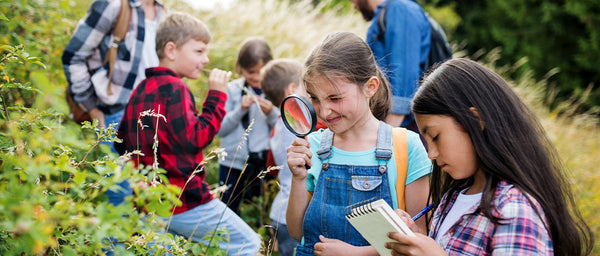
21st Century Skills in the Classroom

When discussing 21st Century Skills, these most often refer to critical thinking, collaboration, creativity, innovation, problem-solving and other similar skills which are highly sought after in the evolving workforce of tomorrow. Although the idea of what 21st Century Skills, for the most part, remains constant, the idea of what constitutes 21st Learning tends to be controversial. Educators have different opinions as to how these skills will be acquired by students, and in what kind of environment they will be most successful. Some believe that a PBL (Project-Based Learning) atmosphere is the most lucrative approach to teach students skills for the future, some advocate the use of current technology in the classroom and others encourage a return to the basics to reinforce communicative and collaborative skills among students. The controversy continues, as 21st Century Skills become progressively more important for young learners to possess.
Founder and CEO of Center for Teaching Quality, Barnett Berry stated, “twenty-first century learning means that students master content while producing, synthesizing, and evaluating information from a wide variety of subjects and sources with an understanding of and respect for diverse cultures,” (Allington, Berry, Brown Wessling, et. al., 1). Berry’s comments lean toward the creation of a more cohesive learning community with international involvement which the P21 group highly advocates as well. However, P21’s focus on 21st Century Learning has a different approach as commented in a recent white paper, “perhaps a better way to think of 21st century learning environments is as the support systems that organize the condition in which humans learn best - systems that accommodate the unique learning needs of every learner and support the positive human relationships needed for effective learning,” (21st Century Learning Environments, 3). Is 21st century learning more about synthesizing a variety of information or facilitating a supportive learning environment?
The PBL believers claim that it is “an innovative approach to learning that teaches a multitude of strategies critical for success in the twenty-first century,” and that, “learners pursue knowledge by asking questions that have piqued their natural curiosity,” (Bell, 39). This philosophy encourages the development of self-driven students, which are ultimately in charge of their learning. Founder of Classroom 2.0, Steve Hargadon agrees with this belief as he said, “Twenty-first century learning will ultimately be ‘learner-driven,’” (Allington, Berry, Brown Wessling, et. al., 3). One of the reasons why there is a broad controversial spectrum is because, “standardized testing does not measure critical twenty-first century skills that are integral for student success,” (21st Century Learning Environments, 40). These type of skills are nearly impossible to test because they must be observed rather than tested.
In contrast to popular opinions of 21st Century Learning, Jim Schmidt, Ed.D, believes a more adaptive learning environment is necessary for student success in the future. He stated that adaptive learning, “means that any student at any level can learn,” because, “it’s based on what their skill level is and how fast they move rather than at the pace the teacher sets,” (Schmidt, 2015). This learning freedom, Schmidt also commented, “puts students in charge of their own learning,” (Schmidt, 2015). In line with the PCS Edventures 21st Century Learning Pedagogy, students should be given the opportunity to learn on their own with the facilitation of instructors. Although opinions vary on how 21st Century Skills ought to be taught, adaptive learning is the system which plays into the strengths of every student and how they best learn. It utilizes all of the aforementioned strategies by employing PBL techniques with modern technology while emphasizing collaboration and communication between students. When it comes to 21st Century Learning, adaptive learning caters to students of all needs.
References:
21st Century Learning Environments. (n.d.). Retrieved June 10, 2015, from http://www.p21.org/storage/documents/le_white_paper-1.pdf
Allington, R., Berry, B., Brown Wessling, S., Cator, K., Chen, M., Farr, S., . . . Rundell Singer, S. (2010, October 11). How Do You Define 21st-Century Learning. Retrieved June 10, 2015, from http://www.edweek.org/tsb/articles/2010/10/12/01panel.h04.html
Bell, S. (2010). Project-Based Learning for the 21st Century: Skills for the Future. The Clearing House, (83), 39-43. Retrieved June 10, 2015, from http://teacherscollegesj.edu/docs/47-PBLforthe21Century_1226201292135.pdf
Schmidt, J. (2015, June 8). Learning 21st Century Skills [Telephone interview].









